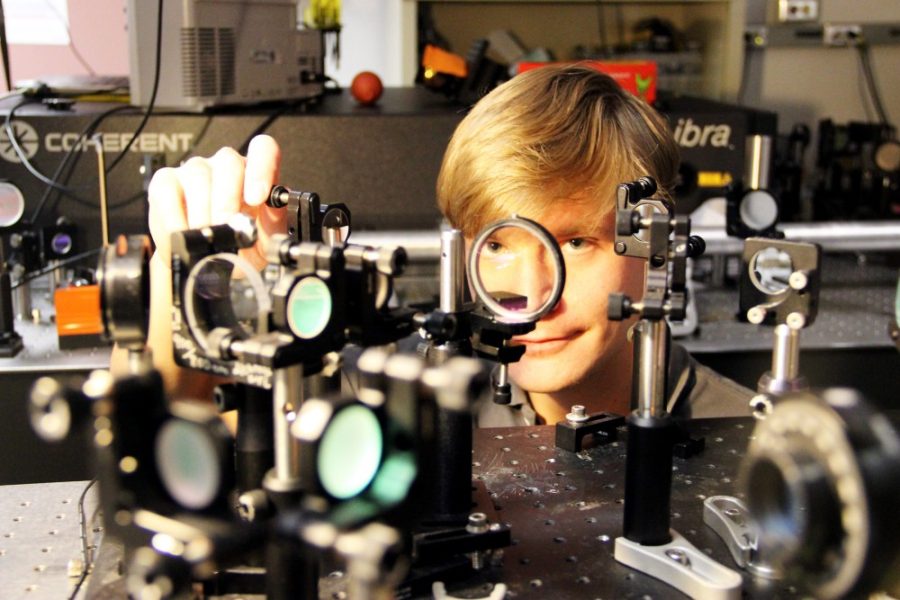UA researchers are experimenting with a new type of laser capable of firing high-intensity bursts of light that could one day be used to divert lightning away from buildings.
The powerful lasers created in the researchers’ lab have demonstrated the potential to be emitted over long distances while maintaining a focused beam, a development that could also impact the fields of radio communication and atmospheric chemistry.
Maik Scheller is an assistant research professor in the UA’s College of Optical Sciences and the first author of the team’s study, recently published in Nature Photonics. He explained that, unlike the average laser pointer, which emits a continuous, low-intensity beam of light, the lasers in his lab pack the energy into a short, high-intensity pulse.
“[The pulse] may have the same amount of photons [as a laser pointer], but they’re compressed into a few femtoseconds … which are a millionth of a billionth of a second,” Scheller said.
The pulses are so intense that they ionize atoms in the air, releasing electrons and creating a plasma channel that trails the laser burst, he said.
To keep the beam from splitting apart, the researchers supply it with enough energy to create what is known as a filament. The intensity at the center of such a filament is so high that it creates a “virtual lens,” concentrating the tiny beam to the point that plasma is created. In turn, Scheller said, the energy that is lost during the creation of the plasma causes the beam to expand, or “defocus.”
“There is a constant defocusing due to the electrons, which equals the focusing due to the virtual lens,” he said. Scheller added that the alternating expansion and contraction of the beam counteracts the rapid diffraction that would normally occur.
Even as a “self-guiding” filament, the beam will eventually lose energy during ionization and by natural spreading, both of which limit the distance the pulse can travel.
To increase distance, the team utilizes a secondary beam that wraps around the first beam. This “dress beam” gradually provides energy to the central beam, Scheller explained, leading to a tenfold increase in the distance it can travel.
In a scaled-down experiment, the team managed to stretch a filament that would normally travel a few centimeters to roughly 30 centimeters.
Weibo Cheng, a graduate student in the College of Optical Sciences and co-author of the study, likened the dress beam to gasoline which “gently refuels” the primary laser.
“If you want to go from Tucson to San Diego, obviously you need to stop somewhere to refuel,” he said. “That’s how it works. You use the dress beam to refuel the energy into the filament.”
Although the technology is in its infancy, filament propagation could one day have applications in radio communication, remote atmospheric sensing and thunder protection, said Jerome Moloney, a professor of both optical sciences and mathematics, and a co-author who’s been working with high-intensity lasers for more than 10 years.
“If you can create a plasma channel that is long enough and lasts long enough, you might be able to direct a lightning strike,” he said.
Like a lightning rod or a copper wire, the thin column of plasma is electrically conductive, said Kenneth Cummins, a research professor in the department of atmospheric sciences.
“The ionized air produced by the laser produces a preferred ionized channel, very much like a [lightning rod],” he said. “It will direct it through that channel and then safely through some grounding mechanism.”
The team’s laser research is funded by a five-year, $7.5 million grant from the U.S. Department of Defense.
—Follow Mark Armao @MarkArmao









